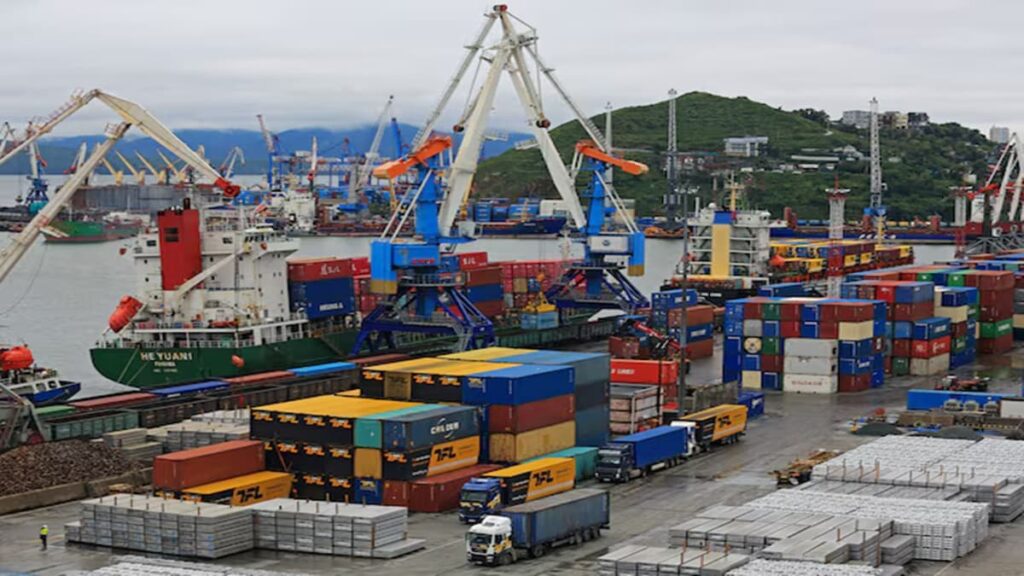NEW DELHI: The US on Friday asked India to bring down import tariffs for it under an all-encompassing trade deal that won’t leave even the latter’s sensitive agriculture markets out. In a televised address to an Indian audience from Washington, US commerce secretary Howard Lutnick made it clear that the US is not interested in negotiating tariffs with India on product-by-product basis, and instead wanted a “macro and grand” pact that covers all areas.
Lutnick’s statement came shortly after president Donald Trump repeated his criticism of India’s “high tariffs,” and indicated the country remained a prime target of reciprocal duties set to take effect April 2. It suddenly boosted expectations about the scope and scale of the proposed bilateral trade agreement between the two countries.
An Indian team led by commerce and industry minster Piyush Goyal is currently in the US to hammer out the deal. There has been no official word yet on Goyal’s meetings or itinerary in the US.
The pact is crucial for India given that the US is India’s single largest trading partner with annual two-way trade in goods and services worth $190 billion; New Delhi enjoys trade surplus with the world’s largest economy in both goods and services.
A host of Indian industries have already recommended tariff concessions to the US – even zero-for-zero tariff –, as they fear reduced market access to the country when reciprocal tariffs are imposed. On an average India’s tariffs are 4.8 percentage points higher than those maintained by the US, and for farm goods, the gap is much larger.
“The United States is interested in doing a macro, large-scale, broad-based trade agreement with India that takes everything into account and that I think can be done..it will require a different kind of thinking, big thinking,” Lutnick said at India Today Conclave.
Earlier in the day, in a cautious reaction to Trump’s announcement on reciprocal tariffs, a spokesperson of India’s external affairs ministry said the country is looking “at deepening trade ties with the US including by reducing tariff and non-tariff barriers under a bilateral trade agreement.”
During Prime Minister Narendra Modi’s visit to the US last month, both sides announced plans to negotiate a mutually beneficial, multi-sector Bilateral Trade Agreement (BTA). The nature and scope of the agreement were not spelled out in detail then.
“President Trump is thinking about it from the term reciprocal. How you treat us is how we would like to treat you. And I would like to tell you that India has some of the highest tariffs in the world, and that will require a rethinking of the relationship, the special relationship, between India and the United States,” the US commerce secretary said. “Let’s bring India’s tariff policy towards America down, and America will invite India in to have really an extraordinary opportunity and relationship with us, something that America has been pushing for,” Lutnick said.
India has taken a conservative view on negotiating agriculture in trade deals in the past out of the concerns of the livelihood of the small and marginal farmers. “You can’t just say it’s off the table. That’s just not an attractive way of doing business. The Indian market for agriculture has to open up,” he said, adding that the opening of the agriculture sector can be calibrated.
“Maybe certain products have quotas, maybe certain products have limits, maybe certain products you do in certain ways, and then we do the same thing on the other side, and we craft an agreement that is sensible between the two of us,” the US commerce secretary said.
Lutnick also said that the US would like India to end the efforts of BRICS countries to try to create a currency to replace the dollar as the economic currency. “These kinds of things don’t create the love and affection that we really deeply feel towards India. We would like those things to end, and we would like trade to be more fair, and we would like to create an incredible and strong and powerful relationship with India going forward.”
Source: The Financial Express




 Rethink Legality Of Marital Rape 75 Years Since Constitution’s Adoption
Rethink Legality Of Marital Rape 75 Years Since Constitution’s Adoption 